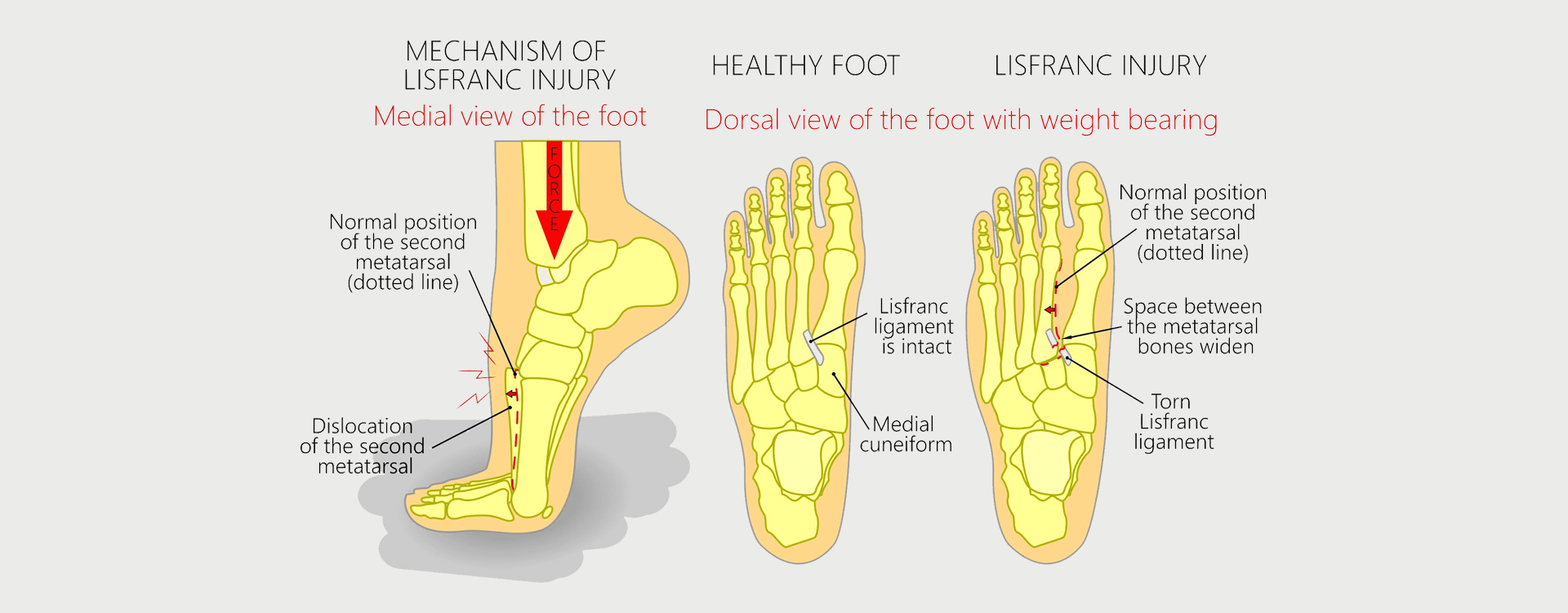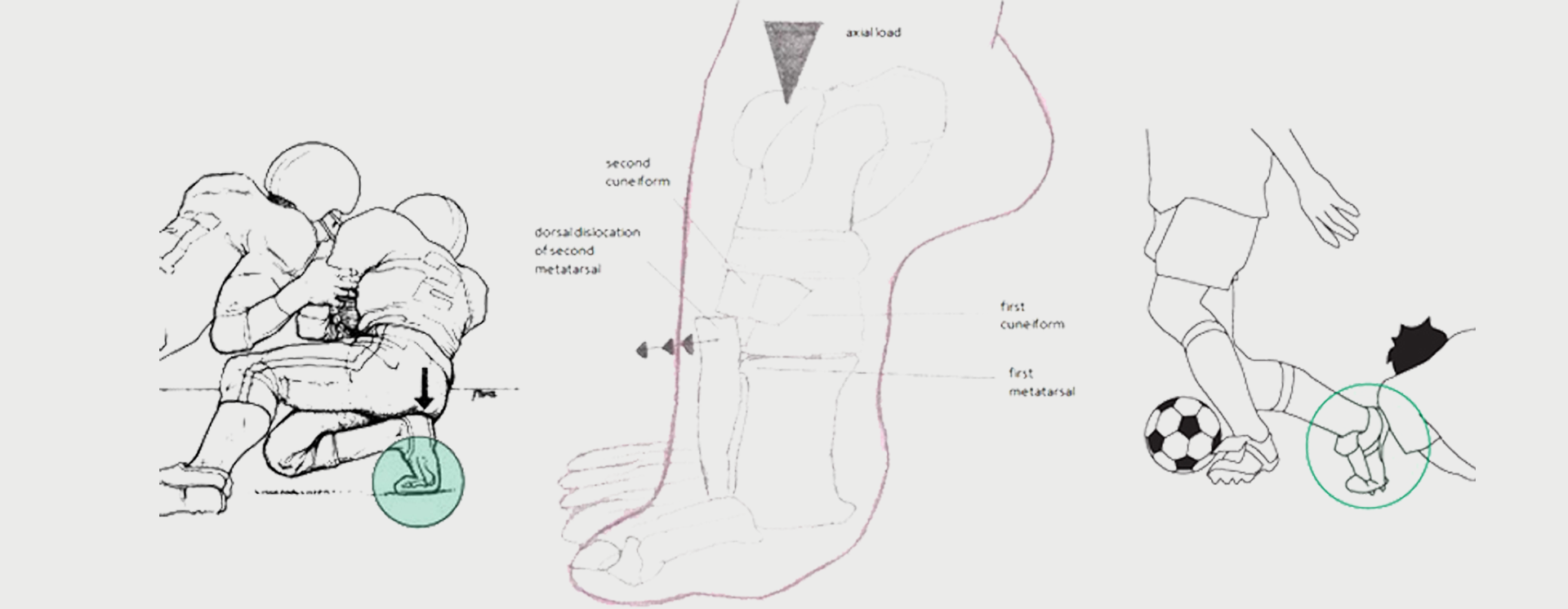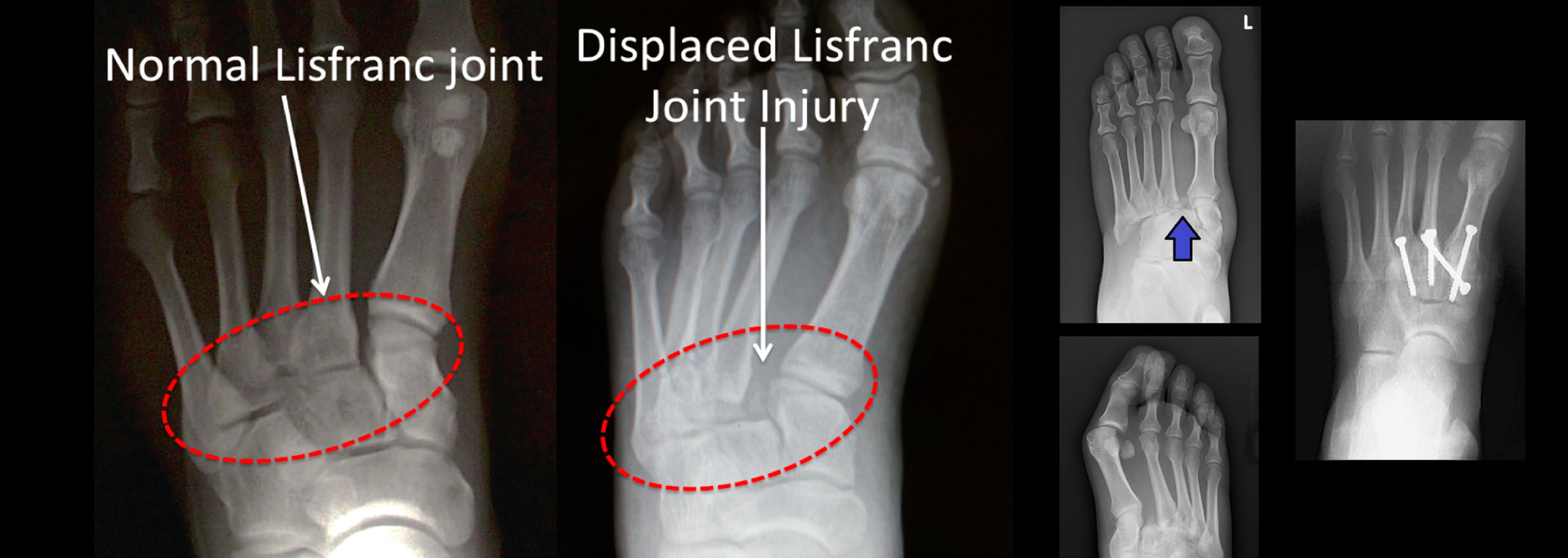LISFRANC FRACTURE
FOOT
MIDFOOT INJURY
a.k.a. LISFRANC FRACTURE

A Lisfranc fracture is an injury in the midfoot that’s commonly seen in football players, gymnasts, and dancers. Usually such an injury occurs from a combination of external rotation and force. To get a better understanding of a Lisfranc fracture, we can briefly look at the anatomy of the foot.
The foot has three parts: the forefoot, midfoot, and hindfoot. The forefoot area has the toes, the midfoot area makes up the arch, and the hindfoot has the heel and lower ankle. Within the midfoot there is a joint called the Lisfranc joint. This is where the metatarsals (bones leading up to the toes) meet the tarsal bones (bones in the arch). There is also a Lisfranc ligament, a thick band of tissue that runs from the medial cuneiform, which is a bone in the arch, to the base of the second metatarsal.
Injuries to the Lisfranc joint can be really serious for an athlete, but, unfortunately, are often missed. The structure is complex, and so a Lisfranc fracture is sometimes misdiagnosed as a midfoot sprain or a metatarsal fracture. This injury is named after Jacques Lisfranc de St. Martin, a French surgeon, who noticed this fracture pattern amongst cavalry men in 1815.
Thankfully, we have seen our fair share of Lisfranc fractures at MOTUS, and each with a different, sport specific background. This allows us to easily spot the signs of this injury and treat it effectively.
Many Lisfranc fractures occur from a trip over a pointed foot.

We see this most commonly in football players. A person could also injure their Lisfranc joint by falling onto the foot, or by simply twisting it.
The most common symptoms associated with this injury are pain in the midfoot, swelling and bruising in the foot or ankle, a bump in the midfoot area, and an inability to put weight on the foot. We’ll look for these symptoms when diagnosing, but we may also want to perform some imaging tests.
Whether or not you will need surgery for the injury will depend on its severity. In mild cases, immobilization with a walking cast can be enough to let the injury heal. Surgery or not, a physical therapy rehabilitation plan should begin as soon as the immobilization period is over.
We have a lot of ways to help you gradually return to full functionality after a Lisfranc injury. Our clinic includes advanced tools such as an anti-gravity treadmill and blood flow restriction therapy. These can help you recover more comfortably and more quickly. On top of that, we will likely prescribe a combination of strength and flexibility exercises to help you move towards full recovery.

3 Ways to Level Up Your Rehab and Injury Prevention With Us





